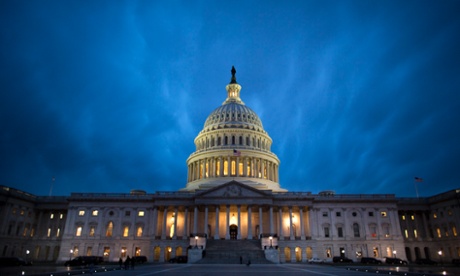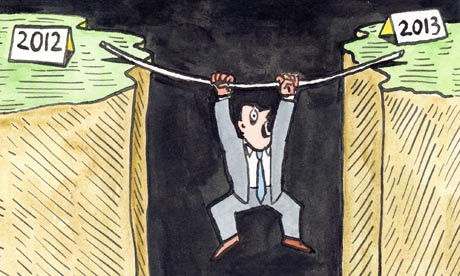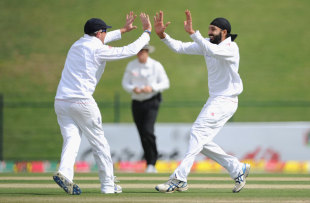Wednesday, 2 January 2013
Outlook Sir Martin Sorrell has expressed himself on the great corporation tax debate. What firms need to understand, the advertising magnate said today, is the imperative of corporate social responsibility.
"Doing good is good business," he told the likes of corporate black
sheep such as Starbucks and Amazon, which have faced obloquy in recent
months for paying less than their fair share of profit taxes in the UK.
I'm afraid this is richer than the Christmas pudding that your
grandmother oversoaked in alcohol. For Sir Martin's record on tax hardly
resembles a model of virtuous corporate citizenship.
For several decades the British state has had a system whereby a UK-based multinational is required to pay corporation tax on its worldwide profits. In 2007 the Labour government proposed to move to a system where firms would only pay tax on their UK profits, a so-called territorial regime. This was good news for the multinationals, implying a smaller tax bill. But they didn't trust Labour to deliver.
So they upped sticks in a kind of pre-emptive protest. Pharmaceutical giant Shire shifted its headquarters to the Irish Republic. So did United Business Media. The exhibitions and magazines group Informa scurried off to Switzerland. The office accommodation provider Regus went to Luxembourg. And, making the biggest song and dance of all was Sir Martin, who shuffled his WPP advertising empire to the Emerald Isle.
Faced with this exodus the Labour Chancellor, Alistair Darling, redoubled his efforts to establish a territorial tax regime. And Sir Martin made it his business to seal the deal. He extracted a guarantee from Mr Darling's successor, George Osborne, that the new territorial regime would definitely come into force. And, in return, Sir Martin announced last year that WPP would be returning its HQ to London. The territorial corporation tax regime came into full force this week. And WPP is, as Sir Martin promised, on its way back.
The trouble is the new territorial tax regime looks even more open to corporate tax avoidance. Under the old system HMRC could, in theory, go after tax on profits anywhere in the world. It seldom did this effectively. But now, with its territorial remit in place, it is even less likely to do so. And there is still more room for clever accountants to register profits overseas by registering intellectual property rights in tax havens.
This compounds the advantage of multinationals in relation to smaller, domestic firms. We have long known that income tax tends to be for the little people. It increasingly looks like corporation tax is only for the little companies.
The only solution is harmonised international governmental agreement to prevent multinationals playing off national governments against each other on profit tax rates.
As for Sir Martin, he might like to consider whether quitting the country and promising to return only when a law you dislike is changed can be considered "doing good".
For several decades the British state has had a system whereby a UK-based multinational is required to pay corporation tax on its worldwide profits. In 2007 the Labour government proposed to move to a system where firms would only pay tax on their UK profits, a so-called territorial regime. This was good news for the multinationals, implying a smaller tax bill. But they didn't trust Labour to deliver.
So they upped sticks in a kind of pre-emptive protest. Pharmaceutical giant Shire shifted its headquarters to the Irish Republic. So did United Business Media. The exhibitions and magazines group Informa scurried off to Switzerland. The office accommodation provider Regus went to Luxembourg. And, making the biggest song and dance of all was Sir Martin, who shuffled his WPP advertising empire to the Emerald Isle.
Faced with this exodus the Labour Chancellor, Alistair Darling, redoubled his efforts to establish a territorial tax regime. And Sir Martin made it his business to seal the deal. He extracted a guarantee from Mr Darling's successor, George Osborne, that the new territorial regime would definitely come into force. And, in return, Sir Martin announced last year that WPP would be returning its HQ to London. The territorial corporation tax regime came into full force this week. And WPP is, as Sir Martin promised, on its way back.
The trouble is the new territorial tax regime looks even more open to corporate tax avoidance. Under the old system HMRC could, in theory, go after tax on profits anywhere in the world. It seldom did this effectively. But now, with its territorial remit in place, it is even less likely to do so. And there is still more room for clever accountants to register profits overseas by registering intellectual property rights in tax havens.
This compounds the advantage of multinationals in relation to smaller, domestic firms. We have long known that income tax tends to be for the little people. It increasingly looks like corporation tax is only for the little companies.
The only solution is harmonised international governmental agreement to prevent multinationals playing off national governments against each other on profit tax rates.
As for Sir Martin, he might like to consider whether quitting the country and promising to return only when a law you dislike is changed can be considered "doing good".








